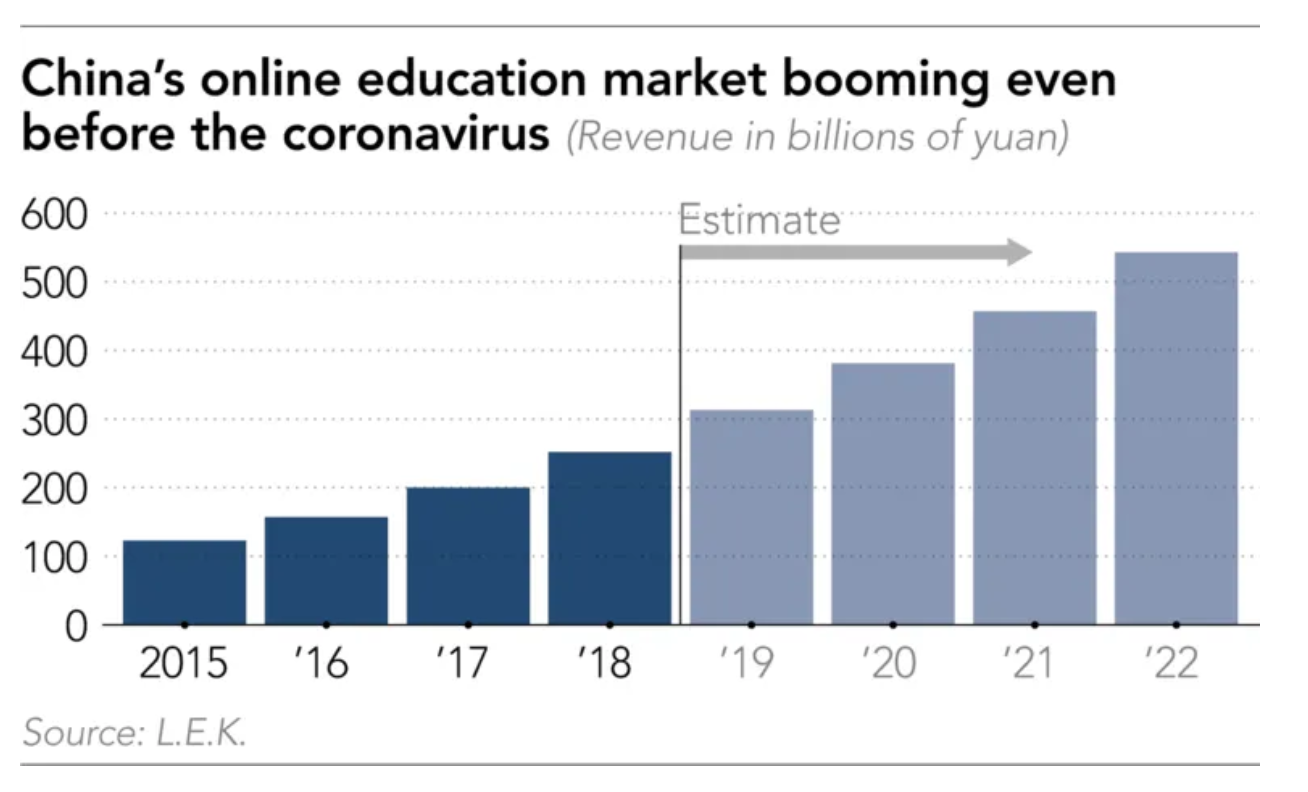It is hard to see many upsides from the coronavirus crisis. But forced innovation in the delivery of online education and health care will almost certain turn out to be one, and an area that will benefit emerging Asian economies in particular.
UNESCO said on March 5 that nearly 300 million children were now off school worldwide, a number that is already likely to have risen as more countries battle virus outbreaks. Thousands of colleges and universities are affected too, with a wave of institutions including Harvard and Stanford canceling in-person lectures and replacing them with virtual meetings using video platforms such as Google Classroom or Skype. As it spreads, coronavirus is set to become the largest peacetime disruption to education in recent human history.
In a small way I was forced to come to terms with this myself last week. One student in a class I teach in Singapore had returned from Italy and was required to self-isolate for seven days under university rules. My class was shifted online too. For three hours I sat in front of a camera in an empty classroom, leading discussions with 30 faces on a laptop, all using Zoom, the video conference app. The experience worked surprisingly well.
Coronavirus is now forcing thousands of teachers into similar learning experiments for the first time. Sensing an opportunity, both Google and Microsoft have made their teleconferencing tools free for education institutions, as well as businesses coping with home working. Zoom’s stock has jumped by a quarter in the last month.
China is already a pioneer in online education, with a market worth RMB 381 billion (USD 55 billion), according to L.E.K., a consultancy. Millions of Chinese students are using platforms like Alibaba’s DingTalk or Tencent’s Ketang rather than going to class.

This can be disruptive, as harassed parents of stay-at-home kids in Tokyo or Hong Kong will tell you. Moving in-person classes online is no educational panacea either. Younger children struggle to focus online for more than short periods. Chinese students, unhappy at the replacement of normal classes, protested recently by handing one-star ratings to DingTalk on China’s app stores, forcing the company to plead for better reviews.
Growing pains aside, pushing education online is likely to have long-term benefits for students and education institutions alike. Experts have long predicted that traditional education would be upended by technology. Yet most schools still teach in ways that are largely unchanged since the 19th century, right down to their long summer holidays, designed to fit around the agricultural harvest.
Partly this is because technology has not been good enough. This is now changing, as faster mobile access combines with platforms like Zoom, making it easier to conduct virtual lessons involving dozens or even hundreds of students. But institutional inertia also plays a part, a fact the coronavirus is helping to overcome.
The idea that moments of crisis can spur innovation should not surprise us. Military conflicts often speed inventions, with the discovery of radar or the development of encryption technologies during the Second World War being just two celebrated examples.
The need for such innovation will become more important over the coming weeks as global health authorities shift from attempting to contain the virus to trying to manage and slow its spread. Evidence suggests that school closures, alongside the cancellation of large public events, help to limit contagion and ensure health systems are not overwhelmed.
Similar innovation is needed in virtual health care too. Coronavirus presents a particular dilemma to patients with minor cold-like symptoms. Should they travel to see doctor just to be safe, but at the cost of overburdening busy medical staff and potentially spreading whatever condition they have?
Virtual doctor apps allowing rapid physician video conferences are well placed to help. This is another area where Asia happens to be a world leader, for instance via apps like Halodoc in Indonesia, which already allows tens of millions of users to link up with a network of 22,000 licensed doctors and get post-consultation home delivery of prescriptions.
In education, plentiful startups in the field of edtech give hints of where these experiments might lead. Large online teaching platforms like Coursera and EdX already show that much of what is taught and examined in classrooms can be moved online, allowing any residual “live” time with teachers, be that in a classroom or on a video call, to be focused on activities that are most helpful to learning.
There are also plenty of examples of new institutions offering innovative kinds of qualifications, such as Lambda, a US-based startup that provides nine-month online degree-style courses in areas like artificial intelligence or data science. The company only uses virtual in-person classes and charges no upfront fees, taking a cut of its graduates’ future earnings instead.
Developing similar learning models is an urgent priority across emerging Asia, given demand for high-quality education is increasing much faster than existing institutions offering old-fashioned in-person learning can supply. There will be many lessons to be learned by the time the coronavirus crisis dies down. But the impact on lessons themselves may well be among the most profound of all.
This article first appeared on Nikkei Asian Review. It’s republished here as part of 36Kr’s ongoing partnership with Nikkei. 36Kr is KrASIA’s parent company.
